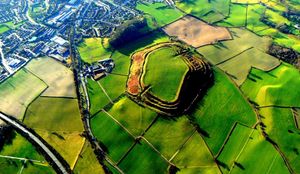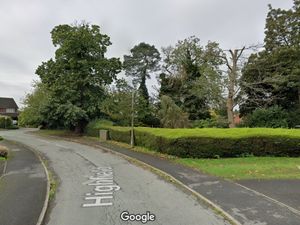Oswestry hillfort group in call to arms as 100-homes plan lodged
Campaigners have issued a rallying cry after controversial proposals for 100 homes near Oswestry's historic Iron Age hillfort were lodged with planning chiefs.

Galliers Homes has submitted a planning statement for two phases of building work on land close to the hillfort.
In the new planning document, the developers say the impact of the scheme would be no more harmful to the hillfort than that of the A5 and several other town centre developments which can be seen from the historic site.
But now campaigners fighting the plans have urged all those concerned by the proposed development to come forward.
A tweet by the Hands Off Old Oswestry Hillfort (HOOOH) group, said: “The next stage of planning applications (for housing in the hillfort setting) are in. So we need you!”
“HOOOH HQ meet tomorrow. So watch this space. We’ve got one week to respond.
“Please RT, and help bring everyone back into the fold, so we can all get ready for the final assault.”
The group said it would be making further comment after it held a meeting yesterday.
Phase one of the development is a full application for 52 homes with associated access, a public open space and an electricity substation.
Phase two is for 48 homes with associated access, public open space and landscaping.
The statement from Berrys says: “Phase one would be developed first and would provide its share of the infrastructure that is required to accompany the development.
Converted
“Galliers Homes have a successful track record of building attractive developments and will commence development on phase one as soon as possible.
“Phase two has been converted from an outline application into a full application in order to provide greater certainty regarding the scheme.
“To the north-west beyond Gobowen Road lies Old Oswestry Hillfort, which was a fortified housing site in the Iron Age from approximately 800BC to 43AD.
“The site is allocated in the Site Allocations and Management of Development (SAMDev) Plan for around 117 dwellings.
“The SAMDev Plan was adopted in December 2015 after being found ‘sound’ by an independent planning Inspector.”
It also adds that the plans would not have a “significant” impact on the hillfort site.
It says: “Old Oswestry Hill Fort occupies a place in the midst of continual change and it is simply not possible to re-create the landscape that existed when the Hill Fort was occupied.
“Against this backdrop, the historic significance of the setting is less than it would be for a more recent historic site.”
“It is important to note that the harm to be considered is to the historic ‘significance’ of the heritage asset and its setting.
“This is quite different from the impact on the landscape and on scenic views.
Significance
“Planning policies do not protect heritage assets from change per se, but only from change that impacts on the historic significance of the asset.
“For the purpose of applying planning policies, the focus must be on whether the historic significance of the setting is reduced.
“The only historic assets physically and directly affected by the development are archaeological remains from the early 20th century, when the site was used for World War One practice trenches as part of the Park Hall military training camp.
“The proposed development will not have any physical impact on the Hillfort, but national and local planning policy require any impact on its setting to be carefully considered.
“Specifically, it is the historic significance of the setting that is important.
“The Hillfort’s setting currently includes on its eastern and southern sides the A5, the National Grid transformer station on Whittington Road, a car sales showroom, an industrial estate, a disused railway line, a farm complex, the town of Oswestry, and the golf course.
“In relation to the setting of the hillfort, a limitation is that there is no certainty over what the landscape looked like during 800BC – 43AD, or how much of it was wooded.
“We can however be certain that the landscape has had significant change over the centuries including the field enclosures of the agricultural revolution, the construction of the Victorian railway line, the post second-world war development of Oswestry town and the A5 road.




